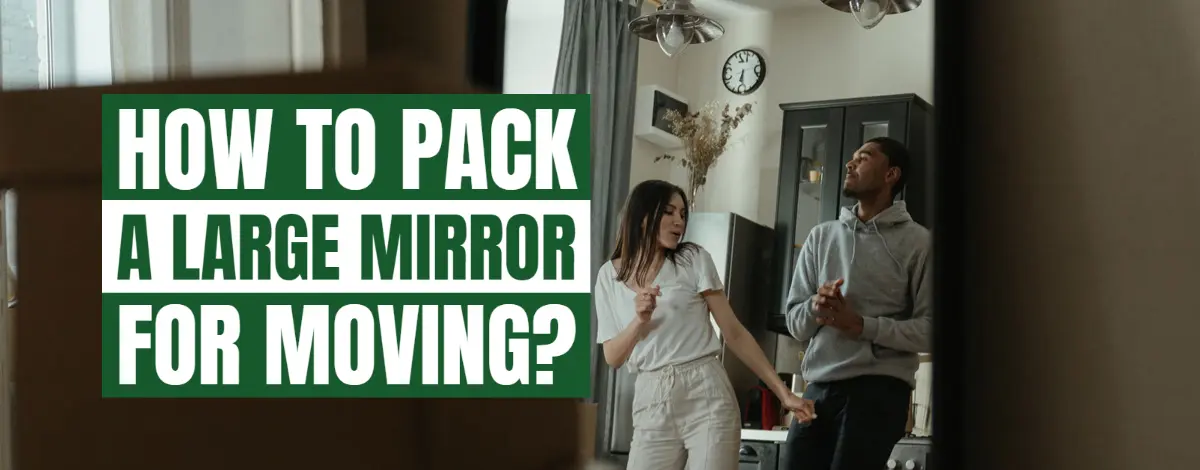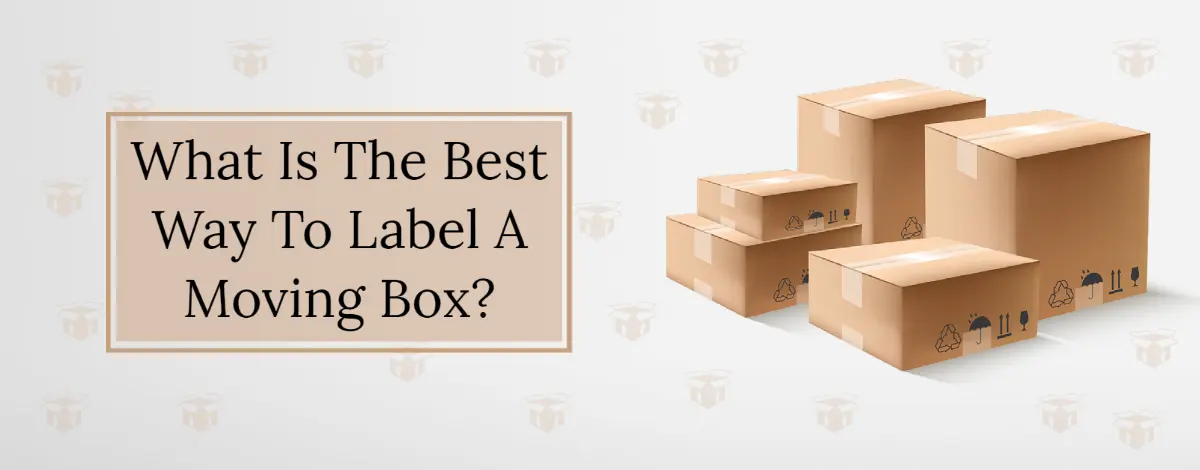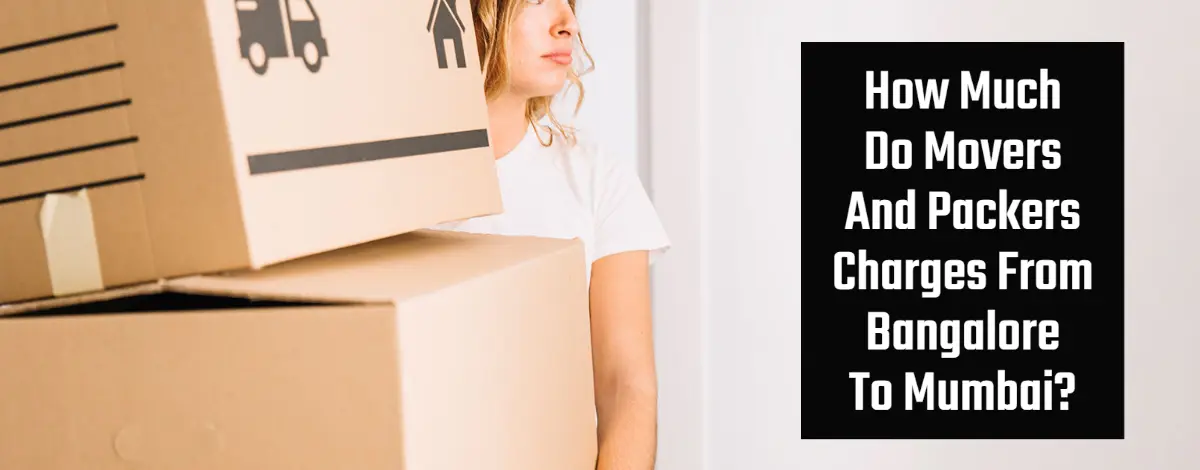Moving a large mirror can be one of the most nerve-racking parts of any relocation. Mirrors are big, awkward, and fragile — and a single mistake can result in cracks, shattering, or costly damage. Whether you’re moving across town or across the country, learning how to pack your mirror correctly is essential to ensure it arrives intact and spotless.
Below, you’ll find a complete, fact-checked guide covering every step — from gathering supplies to safe loading and storage.
Why Packing Mirrors Properly Matters
Large and Awkwardly Shaped
Large mirrors are tricky to handle because of their size and shape. The bigger the mirror, the more it flexes and the harder it is to control without putting pressure on the glass. Professional movers recommend using special mirror cartons to stabilize and protect oversized pieces.
Extremely Fragile
Mirrors are among the most fragile household items. During transit, vibration and impact can easily cause cracks if the mirror is left loose or pressed against hard surfaces. Experts suggest taping the glass with painter’s tape in an “X” or grid pattern to help hold shards together in case of breakage.
Often Expensive or Sentimental
Many mirrors are antiques, family heirlooms, or custom decorative pieces. These deserve extra care or even professional crating for maximum safety. Reputable movers like United Van Lines recommend professional packing for valuable or antique mirrors to prevent costly damage.
Step 1: Gather All Necessary Packing Materials
Essential Packing Supplies
Start by collecting the right materials:
- Mirror boxes or mirror cartons (available at The Home Depot or moving supply stores)
- Packing paper for surface protection
- Bubble wrap for cushioning
- Foam sheets and corner protectors to absorb impact
Tools You’ll Need
Keep these essentials handy:
- Packing tape (preferably heavy-duty)
- Scissors or a utility knife
- Permanent marker for labeling
- Measuring tape to size your box correctly (Home Depot)
Optional Protection Materials
For valuable mirrors, add:
- Cardboard sheets in front and back for extra rigidity
- Moving blankets or towels to reduce vibration and pressure
Step 2: Choose the Right Packing Space
Find a Clean, Flat Surface
Before wrapping, place your mirror on a clean, flat surface — such as a table or floor covered with a soft blanket. Dirt and debris can scratch the surface during wrapping (Guardian Storage).
Create a Safe Work Environment
Avoid packing in high-traffic areas. Keep pets and kids away to prevent accidents while you’re handling the fragile glass.
Organize Materials Before You Start
Lay out all your supplies before you begin. This prevents you from leaving the mirror unattended while you hunt for tape or scissors — a common mistake that leads to accidents.
Step 3: Prep the Mirror for Packing
Clean the Mirror Before Wrapping
Gently wipe the surface with a soft microfiber cloth to remove dust or grime. This prevents scratches caused by trapped particles during transport.
Reinforce the Glass
Use painter’s tape to create an “X” or grid across the surface. This trick — recommended by Angi and Georgetown Moving & Storage — helps prevent the mirror from shattering into large shards if dropped.
Remove Hardware and Attachments
Detach any stands, hanging wires, or brackets. Wrap and label them in a small zip bag so you can reassemble easily later.
Step 4: Wrap the Mirror Like a Pro
Use Packing Paper as the First Layer
Lay several sheets of packing paper flat and place the mirror face down. Fold the paper over the edges and tape securely. This first layer protects against surface scratches.
Add a Layer of Bubble Wrap
Wrap the mirror completely in two or more layers of bubble wrap for cushioning. Secure with tape, but avoid sticking tape directly to the mirror or frame.
Protect the Corners
Use foam corner protectors — available in most moving supply kits — to shield vulnerable edges. You can also cut cardboard triangles as a DIY alternative.
Step 5: Pack the Mirror in a Box
Select the Right-Sized Box
Choose a mirror box that’s slightly larger than your wrapped mirror (around 2–3 inches of space on each side). Telescoping mirror boxes can adjust to fit longer mirrors securely (Easyship).
Line the Box for Cushioning
Line the bottom with crumpled paper or foam sheets. This absorbs shock during handling.
Slide and Secure the Mirror Inside
Gently slide the wrapped mirror into the box upright, never flat. Fill empty spaces with packing paper or foam to prevent shifting. Give the box a light shake — if the mirror moves, add more padding.
Step 6: Label Clearly and Load Safely
Mark the Box Properly
Clearly label the box with:
- “FRAGILE”
- “GLASS”
- “THIS SIDE UP”
Use bold lettering and mark arrows to indicate the top side.
Load Mirrors Vertically
Mirrors should always travel upright, never flat, because vertical positioning reduces pressure on the glass.
Avoid Heat and Pressure
Do not stack heavy boxes on top of mirrors. Secure them between solid surfaces (like mattresses or walls) to keep them stable during transport.
Bonus Tips for Packing Mirrors of All Sizes
Small Mirrors
For small, lightweight mirrors, use thick bubble wrap and smaller boxes or padded mailers. Group similar-sized mirrors together, separated by cardboard sheets.
Extra-Large Mirrors
For oversized or wall-mounted mirrors, consider custom wooden crating or professional packing services (United Van Lines).
Transporting Mirrors in a Car
If transporting personally, position the mirror upright in the backseat, secured by seatbelts or soft padding. Avoid extreme temperatures, which can affect certain adhesives and frames.
Storage Success Starts with the Right Space
Choosing the Right Storage Environment
If you’re not moving immediately, select a climate-controlled storage unit to prevent warping or moisture damage.
Safe Placement in Storage
Always store mirrors upright against a wall with padding between items. Avoid laying them flat, which can cause warping or cracks over time.
Long-Term Protection Tips
Cover mirrors with soft blankets instead of plastic to allow airflow and prevent condensation. Periodically check for signs of moisture or pressure damage.
Key Takeaways
Packing a large mirror for moving doesn’t have to be stressful. With the right materials and careful technique, you can protect your mirrors from cracks and scratches every time. Remember to:
- Reinforce the glass with painter’s tape
- Wrap in packing paper and bubble wrap
- Use mirror-specific cartons
- Label and transport mirrors upright
With these expert-verified methods, your mirror will arrive at its new home in perfect condition — ready to hang, shine, and reflect your next chapter.
To pack a large mirror for moving, tape an “X” on the glass, wrap it in packing paper and bubble wrap, secure it with corner protectors, place it vertically in a mirror box, and label it “Fragile” and “This Side Up.” Transport mirrors upright to prevent cracking or pressure damage.
Why is it necessary to tape the glass of a mirror before packing it for moving?
Taping the mirror’s glass helps minimize the risk of breakage during transit. The tape strengthens the glass, holding any fragments in place even if the box were to break, thus reducing the chance of accidental cuts.
What are the recommended steps for taping a mirror before packing?
Start by laying the mirror face up and create a large X with masking or painter’s tape starting from the corners. Then, tape a grid across the face of the mirror to provide additional reinforcement.
Why should corner protectors be used when packing a mirror for moving?
Foam and cardboard corner protectors serve to cushion the vulnerable corners of the mirror, offering extra protection against impacts and potential damage during transportation.
How can cardboard be used to create a protective layer for a mirror before placing it in a mirror box?
Cut two pieces of cardboard slightly larger than the mirror’s size and tape them onto the mirror using packing tape. This shields the mirror, absorbing impacts and preventing it from bending.
How should a mirror be packed inside a mirror box?
Place crumpled packing paper or newspaper at the bottom of the mirror box for padding. Carefully slide the wrapped mirror into the box and fill any remaining spaces with paper to prevent movement during transit.



